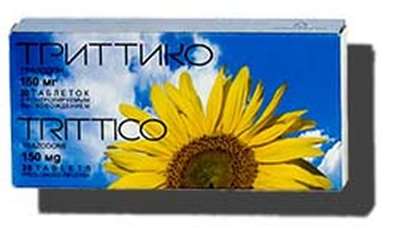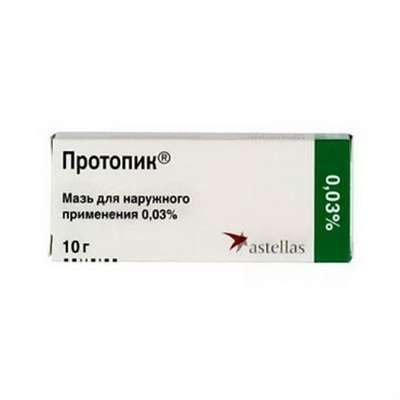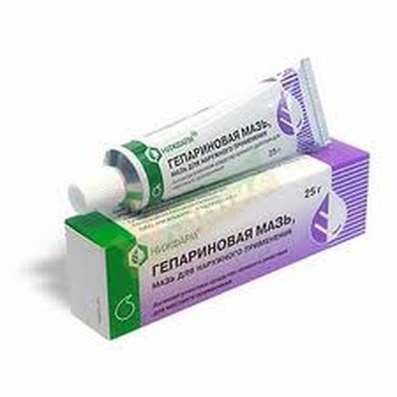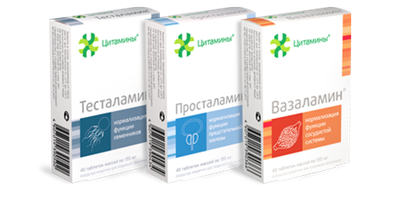Instruction for use: Nozefrin
I want this, give me price
Active substance Mometasone
ATX Code R01AD Mometasone
Pharmacological group
Glucocorticosteroid for topical use [Glucocorticosteroids]
Nosological classification (ICD-10)
J01 Acute sinusitis
Inflammation of the sinuses, Inflammatory diseases of the paranasal sinuses, Purulent inflammation of the paranasal sinuses, Infectious-inflammatory diseases of ENT organs, Infection of the sinuses, Combined sinusitis, Exacerbation of sinusitis, Acute inflammation of the paranasal sinuses, Acute bacterial sinusitis, Acute sinusitis in adults, Subacute sinusitis, acute Sinusitis, sinusitis
J30 Vasomotor and allergic rhinitis
Allergic rinopatiya, Allergic rhinosinusopathy, Allergic respiratory diseases, Allergic rhinitis, nasal allergy, Seasonal Allergic Rhinitis, Vasomotor rhinitis, Long-allergic rhinitis, Perennial allergic rhinitis, Perennial allergic rhinitis, Year-round or seasonal allergic rhinitis, Year-round allergic rhinitis nature, Rhinitis allergic vasomotor, Exacerbation of pollen allergy in the form of Syndrome rinokonyunktivalnogo, Acute allergic rhinitis, Edema of the nasal mucosa, Edema of the nasal mucosa, Swelling of the mucosa of the nasal cavity, Swelling of the nasal mucosa, Swelling of the nasal mucosa, pollen disease, Permanent allergic rhinitis, rhinoconjunctivitis, rhinosinusitis,rhinosinusopathy, Seasonal allergic rhinitis, Seasonal Allergic Rhinitis, Haymarket rhinitis, Chronic allergic rhinitis, Allergic respiratory diseases
J30.2 Other seasonal allergic rhinitis
Allergic rhinitis seasonal, Seasonal rhinitis of an allergic nature
J32 Chronic sinusitis
Allergic rhinosinusopathy, purulent sinusitis, Catarrh nasopharyngeal area, Catarrh of the sinuses, Exacerbation of sinusitis, chronic Sinusitis
J33.0 Polyp of the nasal cavity
Polyposis of the nose, Resection of nasal cavity polyps
Composition
Spray nasal dosed 1 dose
active substance:
Mometasone furoate 50 mcg
Auxiliary substances: MCC and sodium carboxymethylcellulose - 2000 mcg; Glycerol - 2100 mcg; Citric acid monohydrate - 200 mcg; Sodium citrate dihydrate 280 mcg; Polysorbate 80 - 10 mcg; Benzalkonium chloride (50% solution) - 40 μg; Purified water - up to 0.1 g
Description of dosage form
White or almost white suspension. Has a gel-like structure, which when shaken turns into a liquid.
pharmachologic effect
Pharmacological action - anti-inflammatory, anti-allergic, anticongestive, glucocorticoid (local).
Pharmacodynamics
Mometasone is a synthetic SCS for topical application. Has anti-inflammatory and antiallergic effect when used in doses, in which no systemic effects occur. It inhibits the release of inflammatory mediators. Increases the production of lipomodulin, an inhibitor of phospholipase A, which causes a decrease in the release of arachidonic acid and, accordingly, inhibition of the synthesis of metabolic products of arachidonic acid-cyclic endoperoxides, PG. It prevents the accumulation of neutrophils, which reduces inflammatory exudate and production of lymphokines, inhibits the migration of macrophages, leads to a decrease in the processes of infiltration and granulation. Reduces inflammation due to decreased formation of chemotaxis substance (effect on late allergy reactions), inhibits the development of an allergic reaction of an immediate type (due to inhibition of the production of arachidonic acid metabolites and a decrease in the release of inflammatory mediators from mast cells).
In studies with provocative tests with application of antigens to the mucosa of the nasal cavity, high anti-inflammatory activity of mometasone was demonstrated both in the early and late stages of the allergic reaction. This was confirmed by a decrease (in comparison with placebo) of the level of histamine and eosinophil activity, as well as a decrease in the number of eosinophils, neutrophils and adhesion proteins of epithelial cells (as compared to the baseline level).
Pharmacokinetics
With intranasal application, the system bioavailability of mometasone is less than 1% (with a sensitivity of 0.25 pg / ml).
Suspension of mometasone is very poorly absorbed in the digestive tract (gastrointestinal tract), and then a small amount of mometasone suspension that can enter the digestive tract after nasal inhalation, even before excretion by the kidneys or with bile is subjected to active primary metabolism.
Indications
Seasonal or year-round allergic rhinitis in adults, adolescents and children from 2 years;
Acute sinusitis or exacerbation of chronic sinusitis in adults (including the elderly) and adolescents with 12 years of age as part of complex therapy;
Acute rhinosinusitis with mild and moderate symptoms without signs of severe bacterial infection in patients 12 years and older;
Preventive treatment of seasonal allergic rhinitis of moderate and severe course in adults and adolescents from the age of 12 (recommended 2-4 weeks before the expected beginning of the dusting season);
Polyposis of nose, accompanied by violation of nasal breathing and smell, in adults (from 18 years).
Contraindications
Increased sensitivity to mometasone or any of the components that make up the drug;
Recent surgery or nasal injury with damage to the nasal mucosa before healing of the wound (due to the inhibitory effect of GCS on healing processes);
Children's age (with seasonal and allergic rhinitis all year round - up to 2 years, with acute sinusitis or exacerbation of chronic sinusitis - up to 12 years, with polyposis - up to 18 years) due to the lack of relevant data.
With caution: tuberculosis infection (active or latent) of the respiratory tract; An untreated fungal, bacterial, systemic viral infection or infection caused by Herpes simplex, with eye damage (as an exception, the use of the drug with the listed infections is possible as directed by the doctor); Untreated local infection involving the mucous membrane of the nasal cavity; Long-term therapy of SCS (glucocorticosteroids) of systemic action; pregnancy; The period of breastfeeding.
pregnancy and lactation
Studies of the effect of the drug in pregnant women and breastfeeding women have not been conducted. As with other nasal SCS, Nozefrin® should be used during pregnancy and during breastfeeding only if the expected benefit to the mother exceeds the potential risk to the fetus or newborn.
Newborns whose mothers used Nozefrin® during pregnancy should be carefully examined to identify possible hypofunction of the adrenal glands.
Side effects
In adults and adolescents: headache, nosebleeds (ie, obvious bleeding, as well as secretion of blood-colored mucus or blood clots), pharyngitis, burning sensation in the nose, irritation of the nasal mucosa, ulceration of the nasal mucosa, upper respiratory tract infection , A sensation of irritation of the mucous membrane of the pharynx. Nasal bleeding, as a rule, was moderate and stopped on their own, the frequency of their occurrence was slightly greater than when using placebo (5%), but equal to or less than with the appointment of other nasal SCS, which were used as active controls (some The incidence of nasal bleeding was up to 15%). The incidence of all other adverse events was comparable to that of placebo.
In children: nasal bleeding, headache, irritation in the nose, sneezing. The incidence of these adverse events in children was comparable to that of placebo.
Rarely, there were reactions of hypersensitivity of immediate type (eg bronchospasm, dyspnea).
Very rarely - anaphylaxis, angioedema, impaired taste and smell.
It is also very rare - with intranasal application of GCS there have been cases of perforation of the nasal septum and an increase in IOP.
With prolonged use of nasal SCS in high doses, it is possible to develop systemic side effects. Potential systemic effects include Cushing's syndrome, characteristic cushingoid symptoms, suppression of adrenal function, growth retardation in children and adolescents, cataracts, glaucoma, and less often a number of psychological or behavioral effects, including psychomotor hyperactivity, sleep disturbance, anxiety, depression or aggression (especially in Children).
Interaction
With the simultaneous use of mometasone with loratadine, patients were well tolerated. There was no effect of mometasone on the concentration of loratadine or its main metabolite in blood plasma.
Studies of interaction with other drugs have not been conducted.
Dosing and Administration
Intranasally. Injection of the suspension contained in the vial is carried out using a special dispensing nozzle on the vial.
Tilt your head and inject the drug into each nostril as recommended by your doctor.
Before the first application of the nasal spray Nozefrin®, it is necessary to calibrate it by pressing the dosing nozzle 6-7 times, after which the stereotype supply of the preparation is established - 0.1 g suspension (50 μg mometasone).
If the spray is not used for 14 or more days, then a recalibration is necessary.
Before each use, it is necessary to vigorously shake the bottle.
Treatment of seasonal or all-the-year-round allergic rhinitis. Adults (including the elderly) and adolescents with 12 years of age: the recommended preventive and therapeutic dose of the drug is two injections (50 μg each) in each nasal passage once a day (daily dose of 200 μg). When the therapeutic effect for maintenance therapy is achieved, it is possible to reduce the dose to one injection in each nasal passage once a day (daily dose - 100 μg). If the symptoms can not be reduced by applying the drug at the recommended therapeutic dose, the daily dose may be increased to four injections per each nasal passage once a day (daily dose of 400 μg). After reducing the symptoms of the disease, a dose reduction is recommended.
Children 2-11 years of age: the recommended therapeutic dose is one injection (50 μg) in each nasal passage once a day (daily dose is 100 μg).
For the use of the drug in children, it may be necessary to help adults.
The onset of the drug is usually observed clinically within 12 hours after the first use of the drug.
Ancillary treatment of acute sinusitis or exacerbation of chronic sinusitis. The recommended therapeutic dose for adults (including the elderly) and adolescents from the age of 12 is two injections (50 μg each) in each nasal passage twice a day (daily dose of 400 μg).
If the symptoms can not be reduced by applying the drug at the recommended therapeutic dose, the daily dose can be increased to four injections in each nasal passage twice a day (a daily dose of 800 μg).
After reducing the symptoms of the disease, a dose reduction is recommended.
Treatment of acute rhinosinusitis without signs of severe bacterial infection. The recommended therapeutic dose of the drug for adults and adolescents from the age of 12 is two injections (50 μg each) to each nasal passage twice a day (daily dose is 400 μg). If symptoms worsen during treatment, specialist consultation is necessary.
Treatment of polyposis of the nose. The recommended therapeutic dose for adults from 18 years (including the elderly) is two injections (50 μg each) in each nasal passage twice a day (daily dose of 400 μg). After reducing the symptoms of the disease, it is recommended that the dose be reduced to two injections (50 μg each) in each nasal passage once a day (daily dose of 200 μg).
Overdose
Symptoms: oppression of the hypothalamic-pituitary-adrenal system (may occur in the case of prolonged use of GCS in high doses, as well as the simultaneous use of several GCS).
Treatment: Due to the low systemic bioavailability of the drug (less than 1% with the sensitivity of the 0.25 pg / ml assay method), it is unlikely that any accidental or intentional overdose will require taking any measures other than observation with a possible subsequent resumption of the drug at the recommended dose. If necessary, treatment is symptomatic.
special instructions
Do not use in ophthalmology.
When using the drug for a long time (for several months and longer), periodic examination with a doctor is necessary to detect possible changes in the mucous membrane of the nasal cavity in time.
In the case of the development of a local fungal infection of the nose or throat, it may be necessary to stop the therapy with the drug and conduct special treatment. The long-term irritation of the mucous membrane of the nasal cavity and pharynx is also an indication for the abolition of therapy with the drug.
Patients who switch to nasal spray Nozefrin® after long-term therapy with SCS of systemic action require special attention. The abolition of SCS systemic action in such patients can lead to adrenal insufficiency, the restoration of which may take several months. In case of signs of adrenal insufficiency, the reception of systemic SCS should be resumed and other necessary measures taken.
During the transition from the treatment of SCS systemic action to the treatment with nasal spray Nozefrin®, some patients may experience withdrawal symptoms of systemic SCS (eg joint and / or muscle pain, fatigue and depression). Such patients need to be persuaded of the advisability of continuing the treatment with nasal spray Nozefrin®. Transition from systemic to local SCS can also reveal previously developed allergic diseases, such as allergic conjunctivitis and eczema, which were previously masked by SCS therapy of systemic action.
Patients who use SCS have potentially decreased immune reactivity and should be warned about the increased risk of infection if they come in contact with certain infectious diseases (for example, chickenpox, measles) and the need for consultation with a doctor if such contact occurs.
It is necessary to regularly monitor the condition of patients receiving the drug for a long time. With prolonged use of nasal SCS in high doses, it is possible to develop systemic side effects. The probability of these effects is much lower than when using systemic GCS, and may vary in individual patients, as well as between different GCS. Potential systemic effects include Cushing's syndrome, characteristic cushingoid symptoms, suppression of adrenal function, growth retardation in children and adolescents, cataracts, glaucoma, and less often a number of psychological or behavioral effects, including psychomotor hyperactivity, sleep disturbance, anxiety, depression or aggression (especially in Children).
It is recommended to regularly monitor the growth of children receiving long-term therapy with mometasone. If the growth is slowed down, the current therapy should be reviewed in order to reduce the dose of mometasone to the minimum effective dose that allows controlling the symptoms of the disease. In addition, you should refer the patient to a consultation with the pediatrician.
Treatment with GCS with higher doses than recommended, can lead to clinically significant suppression of adrenal function.
If there are signs of severe bacterial infection (eg fever, persistent and sharp pain on one side of the face or toothache, swelling in the orbital or periorbital area) immediate medical consultation is necessary.
With the use of mometasone in a dosage form, a nasal spray for 12 months did not cause signs of atrophy of the mucous membrane of the nasal cavity.
The efficacy and safety of mometasone has not been studied in the treatment of unilateral polyps, polyps associated with muscovicosis, and polyps that completely cover the nasal cavity. Unilateral polyps of irregular shape or bleeding polyps should be further inspected.
Impact on the ability to drive vehicles and mechanisms. Data on the negative effect of the drug in recommended doses on the ability to drive vehicles and mechanisms, as well as other activities that require concentration and speed of psychomotor reactions, are not available.
Form of issue
Spray nasal dosed, 50 mcg / dose. 18 g (120 doses) in a plastic vial (LDPE) with a dispenser for nasal use complete with a cap. 1 fl. Placed in a pack of cardboard.
Terms of leave from pharmacies
On prescription.
storage Conditions
At a temperature not higher than 25 ° C (do not freeze).
Keep out of the reach of children.
Shelf life
3 years.
Do not use after the expiry date printed on the package.

 Cart
Cart





